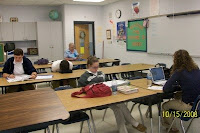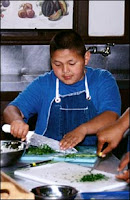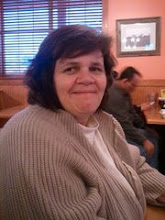
Growth vs. Fixed Mindset
After watching the podcast video interview of Dr. Carol Dweck on itunes, I can see a lot of the problems having a fixed mindset could create in a classroom. Dr. Dweck, a Professor of Psychology at Stanford University, recently wrote a book entitled, "Mindset: The New Psychology of Success" in which she explains her theory that in order to perform optimally, we need to learn from our mistakes. The belief that you can't improve stunts achievement. She states that people in a fixed mindset, often stagnate and don't try new things because they feel they will fail. They base their activities on whether their intelligence will be shown. Failure, they feel, will make them appear less intelligent. Failure, Dr. Dweck states, is where growth happens. The belief that you can overcome your mistakes will help you to grow and learn. You are building new neuron connections which leads to the ability to improve your intellectual skills.
I believe the fixed mindset can be created during the elementary years by well-meaning parents and teachers with the use of labels. Labels, even though positive, can be harmful because they may lead to a fixed mindset. Labeling a child as smart puts so much pressure on them to perform that they may give up because they feel they can't live up to the label. Because their intelligence has been praised rather than their effort, they are afraid of looking dumb in front of classmates. Praising a child for their intelligence rather than effort, saps their motivation. Instead, it is better to praise the effort they put in the work rather than how smart they are. An example of this could be: "Susie, I appreciate how hard you worked on this project" rather than saying, "You're such a good artist" or "You're so smart".
I think we all tend to put labels on people but this is something I want to make a conscious effort to try to avoid in the classroom. Once a child is labeled, it is so hard for him or her to overcome the labels. I think the labels also make us a little biased in our evaluation of the student, knowing ahead of time that the good student is going to hand it quality work so maybe we just expect it and the same goes for the underachieving child where we just expect them to hand in poor work so maybe they don't try as hard. We need to always have high expectations for our students and try to turn a fixed mindset in a child into a growth mindset by always encouraging them to go beyond their own expectations, out of their comfort zone, even if there is a chance they'll make mistakes and fail. Mistakes are what help us grow.
To view this video
I believe the fixed mindset can be created during the elementary years by well-meaning parents and teachers with the use of labels. Labels, even though positive, can be harmful because they may lead to a fixed mindset. Labeling a child as smart puts so much pressure on them to perform that they may give up because they feel they can't live up to the label. Because their intelligence has been praised rather than their effort, they are afraid of looking dumb in front of classmates. Praising a child for their intelligence rather than effort, saps their motivation. Instead, it is better to praise the effort they put in the work rather than how smart they are. An example of this could be: "Susie, I appreciate how hard you worked on this project" rather than saying, "You're such a good artist" or "You're so smart".
I think we all tend to put labels on people but this is something I want to make a conscious effort to try to avoid in the classroom. Once a child is labeled, it is so hard for him or her to overcome the labels. I think the labels also make us a little biased in our evaluation of the student, knowing ahead of time that the good student is going to hand it quality work so maybe we just expect it and the same goes for the underachieving child where we just expect them to hand in poor work so maybe they don't try as hard. We need to always have high expectations for our students and try to turn a fixed mindset in a child into a growth mindset by always encouraging them to go beyond their own expectations, out of their comfort zone, even if there is a chance they'll make mistakes and fail. Mistakes are what help us grow.
To view this video










